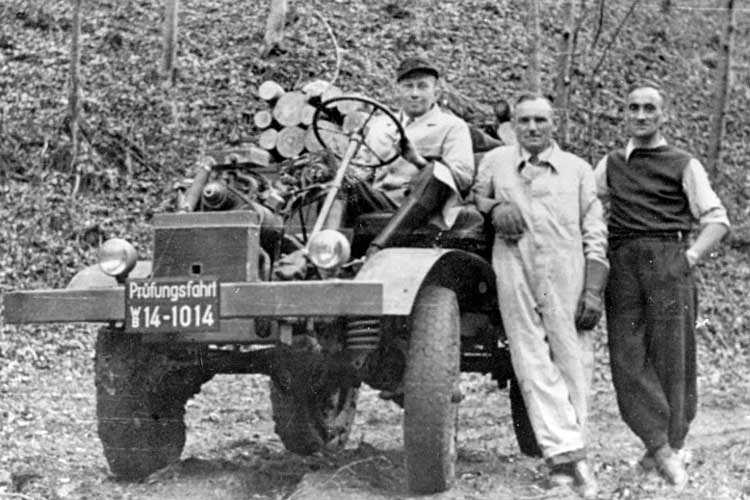
Five years ago this week the first Unimog (Universal-Motor-Gerät or Universal Motor Device) was delivered to a customer near Stuttgart.
~
News Release, Leinfelden-Echterdingen / Wörth / Göppingen, 19 March 2024: [auto-translated] Exactly 75 years ago, the first Unimog rolled up to a customer near Stuttgart. The vehicle came from series production at the mechanical engineering company Gebrüder Boehringer in Göppingen, Swabia. The premier vehicle was delivered on March 19, 1949 by the Unimog general agency Kloz in Fellbach, just a few months after production began. This was the starting signal for the now 75-year international success story of the Universal-Motor-Gerät, in short: Unimog.
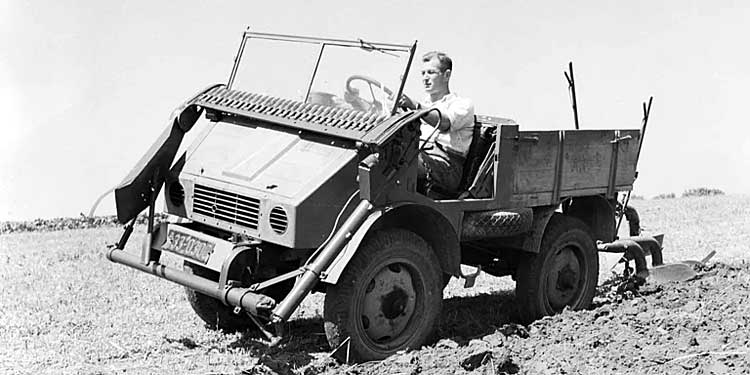
The first series Unimog from the 70200 series with chassis number 003, which bore Boehringer’s stylised ox head logo on the hood, went to a customer in Hößlinswart. The two Unimogs with the numbers 001 and 002 were built as test vehicles only for internal purposes and were not sold. For the first time, the vehicle combined the advantages of a tractor, implement carrier and truck and differed significantly from the conventional tractors that were available on the market at the time, not only visually but also because of its versatility.
Within a very short time, the demand for the versatile Unimog in largely destroyed post-war Germany was so great that Boehringer’s production capacity quickly reached its limit. The triumph of the Unimog continued from autumn 1950 under the direction of what was then Daimler-Benz AG. Production of the all-wheel drive vehicle took place at the Gaggenau plant from June 1951 and at the Wörth plant from August 2002. Today, the off-road vehicle and equipment carrier with a long tradition is not only widely known, but is also a state-of-the-art vehicle that is used, among other things, in municipalities, fire departments, disaster control, agriculture and the military sector.
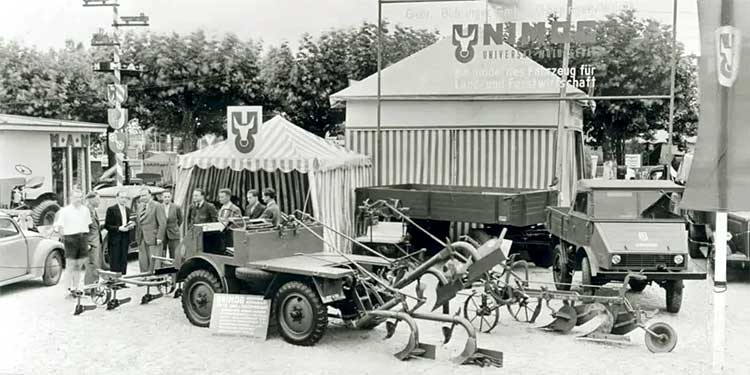
Stations of the traditional Unimog brand: story of a legend and how it all began
Immediately after the end of the Second World War, Albert Friedrich, technical manager at the gold and silverware factory Erhard & Söhne in Schwäbisch Gmünd and previously head of aircraft engine design at Daimler-Benz, began developing a compact all-wheel drive machine with four equally sized wheels and an engine power of 25hp. It was primarily intended for agricultural use, but also for use as a stationary prime mover and delivery vehicle for the agricultural sector at a speed of up to 50 km/h. These early considerations had to meet the strict criteria of the Morgenthau Plan in the American occupation zone, which was intended to transform Germany into a purely agricultural state.
Friedrich’s first drawings for such a versatile all-round agricultural machine date from the fall of 1945 with a track width of 1,270 millimetres, which corresponded to exactly two rows of potatoes. Other characteristic features were the folding top and a folding windshield as well as a drive for agricultural implements at the front, a towing device at the rear and an auxiliary loading area on the platform behind the driver’s seat. To realise this concept, Friedrich gathered a dedicated team of developers around him, including his former employee Heinrich Rößler, who had previously worked in passenger car and engine development at Daimler-Benz. The thing fits: Since the end of the war Rößler has been making a living as an unskilled agricultural worker, is able to incorporate a lot of his experience, and becomes the chief designer of the first prototype.
At that time, 400 Reichsmarks was the standard salary for the engineers involved. The leather goods manufacturer Franz Catta supported the development work financially. In ‘Stories about the Unimog‘, edited by Michael Wessel, the long-time chairman of the Unimog Club Gaggenau, Hans Zabel, who is part of the development team, remembers the circumstances surrounding the birth of the Unimog: “However, in order to be able to start immediately, emergency aid was used and 25,000 Reichsmarks were raised from our own resources. We were all away from home during the week and lived in modest private quarters. Therefore there were no specific working hours. It was at least 12 hours a day, sometimes up to 18 hours – of course without additional pay.”
Approval from the American occupying power, the rare ‘Production Order’, was granted for Friedrich’s ‘motor-driven universal device for agriculture’ in late autumn of 1945. Because Heinrich Rößler then extensively revised the new vehicle concept, it had to be renewed six months later before it could be built. Friedrich gained Erhard & Söhne as a partner for prototype production, and Daimler-Benz supplied the OM 636 engine. The first prototype was completed in Schwäbisch Gmünd in 1946 and the first test drive with the U 1 took place on October 9th of the same year. An intensive testing phase began.
Even before the first public presentation, Hans Zabel abbreviated the unwieldy name Universal-Motor-Gerät [Universal Motor Device] with the acronym ‘Unimog’. The vehicle was presented to the public for the first time under this catchy name on August 29, 1948 at the exhibition of the German Agricultural Society (DLG) in Frankfurt am Main and immediately received 150 pre-orders.
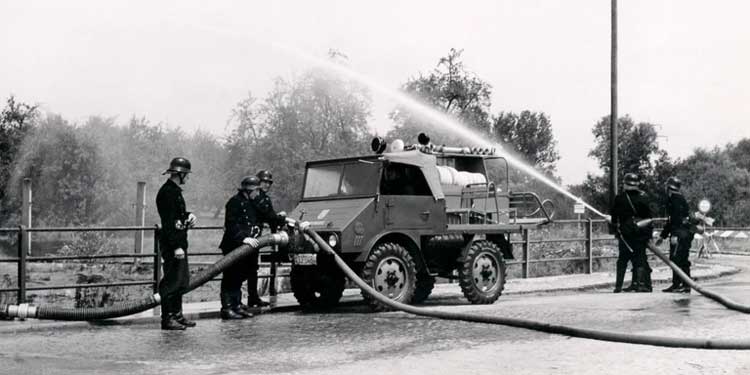
1949: Industrial production begins at Gebrüder Boehringer in Göppingen
Series production of the Unimog began in 1949 at Gebrüder Boehringer in the ‘Stauferstadt’ Göppingen on the edge of the Swabian Alb, after machine manufacturer Rolf Boehringer from Erhard & Söhne took over the production of the universal motor device. Without an assembly line and mostly by hand, the approximately 90 employees built up to 50 vehicles a month. A total of 600 Unimog units of the U 70200 series were manufactured by Boehringer, including 44 units for the Swiss Army. This confirmed the suitability of the Unimog, which had previously only been used for agricultural purposes, for other areas in which there was growing interest in this extraordinary vehicle concept. Two of these original Unimogs from Boehringer production are on display in the Unimog Museum Gaggenau: the prototype U 6, the second oldest surviving Unimog and a Unimog from the first series of model 70200.
1950: Daimler-Benz AG takes over production of the Unimog
Since the volumes in demand required high investments, Daimler-Benz AG acquired the Unimog business with all patents and production facilities in the autumn of 1950 – including the development team and the newly established sales team. The takeover was contractually recorded in five points on a two-page document and a purchase price of 600,000 German marks was agreed. Looking back, it’s a bargain and a document that would make lawyers shake their heads today. The two forefathers of the vehicle also moved to Daimler-Benz: Albert Friedrich was responsible for the Unimog as technical manager until 1958 and Heinrich Rößler, chief designer of the Unimog at Boehringer, remained in this position at Mercedes-Benz in Gaggenau until 1976.
Production of the Unimog with the 2010 series began in the Gaggenau plant in mid-1951 – an allusion to the 2010 cost centre of the agricultural department at Erhard & Söhne, where the first prototypes were created. In 1953, numerous further developments were implemented with the 401 and 402 series: For the first time, a closed, shock- and impact-proof all-steel driver’s cab supplemented the previous ‘convertible’ cab with a folding top. It made the drivers’ work significantly safer while driving and protected them better, for example when working on construction sites. From May 1953, the Unimog bore the Mercedes star in addition to the previous ox head symbol, which was not finally eliminated until September 1955. Since then, the Unimog has been continuously developed and improved and always adapted to current requirements profiles.
Many features change, but the basic design remains the same
The Unimog has proven itself as a versatile work machine for more than seven decades. Since the first delivery in 1949, over 375,000 Unimogs have rolled off the production line to date. No wonder: the Unimog masters extreme terrain, as a two-way vehicle it also pulls entire freight trains on rails and has attachment and assembly space for operating a variety of equipment.
The basic concept has remained: four wheels of the same size, frame construction like a truck, high off-road mobility thanks to portal axles with coil springs, all-wheel drive with differential locks at the front and rear, compact dimensions with four attachment and assembly spaces and the option of driving attachments and attachments at the front , middle, side and rear as well as the operation of a PTO shaft at the front, middle and rear. Added to this is the comparatively high speed of 50 km/h back then and up to 89 km/h today, which also makes longer distances on the motorway possible.
Up to date: the current Unimog series
The Unimog implement carriers U 219 to U 535 are characterised by very compact dimensions, many interfaces, modern operating systems, year-round use, economical operation, high ergonomics and safety on the road, in tight city and construction site traffic and off-road. With the hydrostatic travel drive, the hydrospring for lowering and stabilising the frame and the compatibility with numerous equipment and body manufacturers, the focus of the equipment carrier is in the municipal sector and wherever reliable use of equipment and, above all, the combination of several devices on one vehicle is required.
As part of the ‘WaVe’ project, the first Unimog equipment carrier prototype with a hydrogen combustion (Wasserstoff-Verbrennungsmotor or WaVe) engine has been in intensive testing since 2023. The developers have already refuelled the vehicle at public filling stations, successfully completed uphill and acceleration runs and tested its performance in mowing operations. They discuss whether and to what extent hydrogen combustion engines can serve as a useful supplement to battery-electric and fuel cell-based drive variants.
If extreme off-road mobility is a top priority, the highly off-road Unimog series with an all-steel cab comes into play. Whether in the construction industry, fire department, disaster relief or expedition: the highly off-road Unimog U 4023 and U 5023 series transport crews, equipment, materials and heavy equipment as safely and quickly as possible to even the most remote locations in rough terrain thanks to all-wheel drive and extreme torsional capacity.
With these two series, the Unimog covers a wide range of applications. A basic requirement for irrigating planted areas, shunting locomotives on tracks, fighting forest fires and saving lives in floods in the coming decades.
~
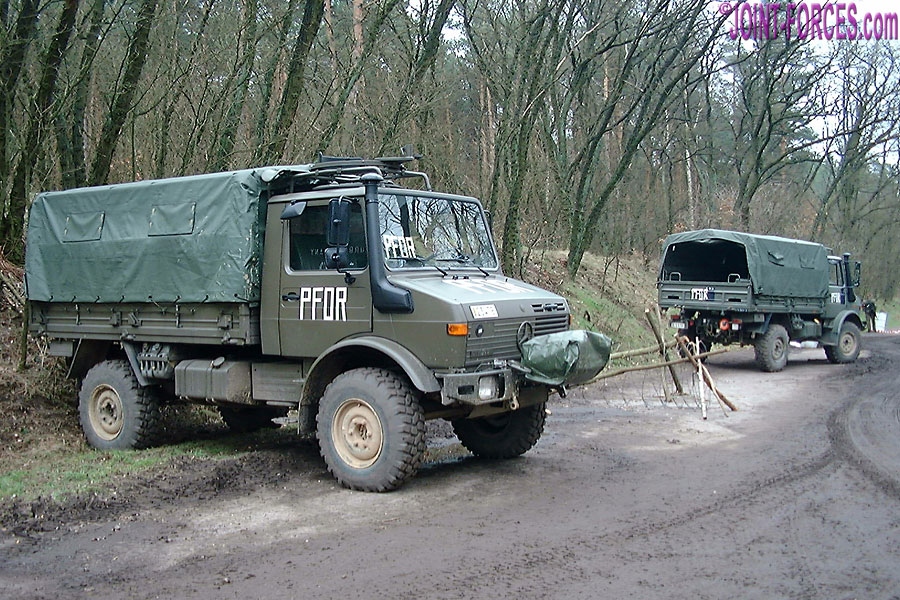
Editor’s Footnote: Very much like the British Land Rover which had gone into production the previous year, initially conceived as a small 4×4 utility vehicle for the agricultural sector, the slightly larger German Unimog would also soon be put into military service. This News Release from Daimler Truck has prompted me to delve back into my photo archives for examples of Military Unimogs and I have asked Carl to check his collection. Our recent activities have caused both of us to accrue work backloads, so compiling a Military Unimog feature is on the back burner for the moment, but this 75th Anniversary year of the type would be the ideal time to compile it.
<>


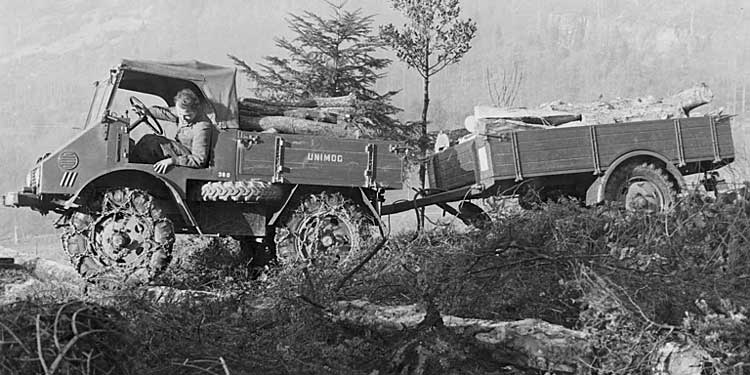
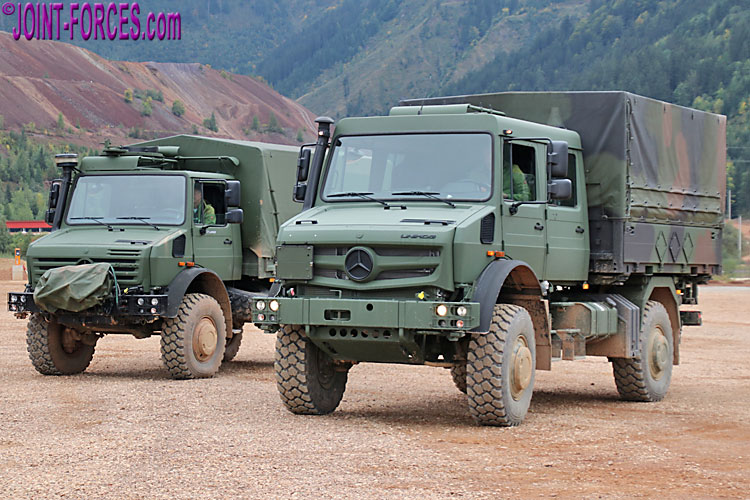
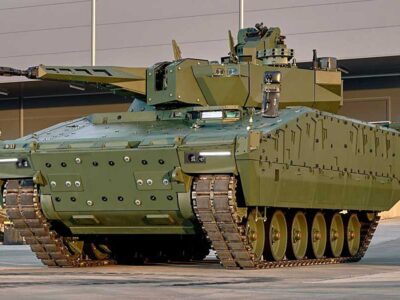
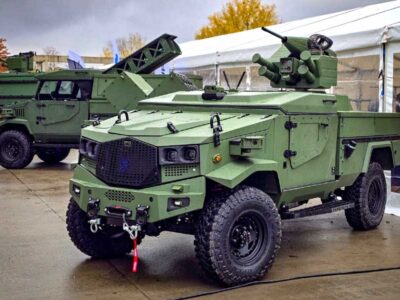
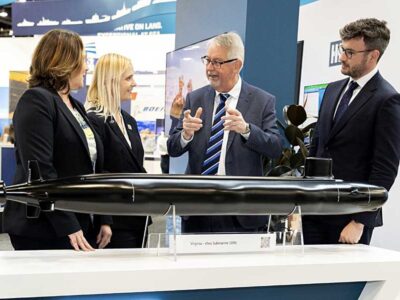
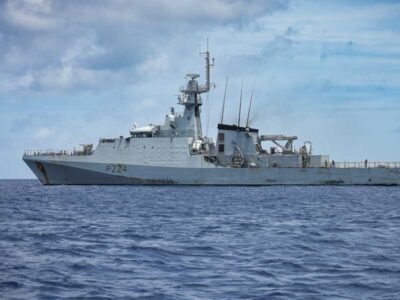
















Pingback : Joint-Forces Weekly Update 2024 - 12 | Joint Forces News